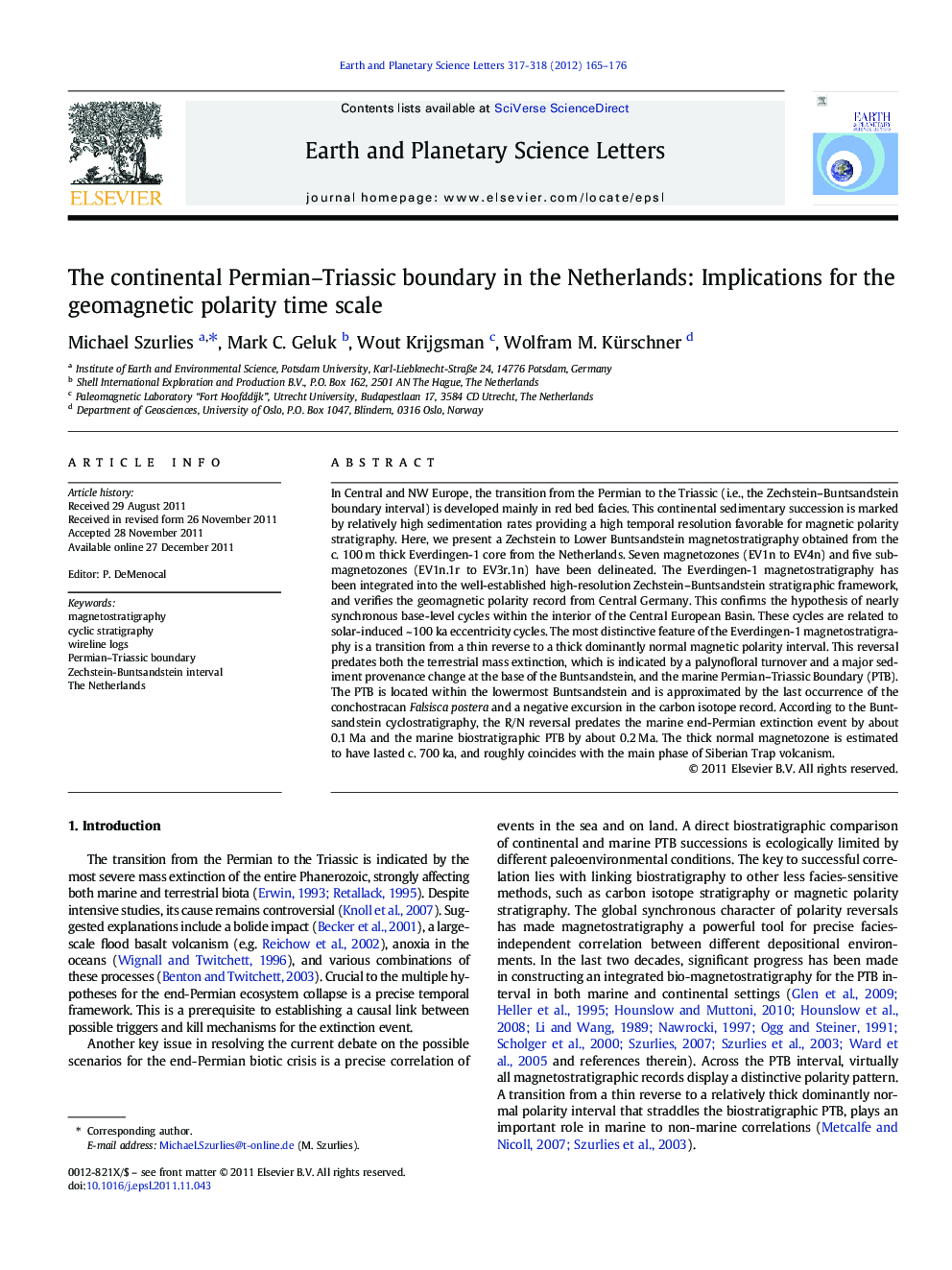| Article ID | Journal | Published Year | Pages | File Type |
|---|---|---|---|---|
| 4677634 | Earth and Planetary Science Letters | 2012 | 12 Pages |
In Central and NW Europe, the transition from the Permian to the Triassic (i.e., the Zechstein–Buntsandstein boundary interval) is developed mainly in red bed facies. This continental sedimentary succession is marked by relatively high sedimentation rates providing a high temporal resolution favorable for magnetic polarity stratigraphy. Here, we present a Zechstein to Lower Buntsandstein magnetostratigraphy obtained from the c. 100 m thick Everdingen-1 core from the Netherlands. Seven magnetozones (EV1n to EV4n) and five submagnetozones (EV1n.1r to EV3r.1n) have been delineated. The Everdingen-1 magnetostratigraphy has been integrated into the well-established high-resolution Zechstein–Buntsandstein stratigraphic framework, and verifies the geomagnetic polarity record from Central Germany. This confirms the hypothesis of nearly synchronous base-level cycles within the interior of the Central European Basin. These cycles are related to solar-induced ~ 100 ka eccentricity cycles. The most distinctive feature of the Everdingen-1 magnetostratigraphy is a transition from a thin reverse to a thick dominantly normal magnetic polarity interval. This reversal predates both the terrestrial mass extinction, which is indicated by a palynofloral turnover and a major sediment provenance change at the base of the Buntsandstein, and the marine Permian–Triassic Boundary (PTB). The PTB is located within the lowermost Buntsandstein and is approximated by the last occurrence of the conchostracan Falsisca postera and a negative excursion in the carbon isotope record. According to the Buntsandstein cyclostratigraphy, the R/N reversal predates the marine end-Permian extinction event by about 0.1 Ma and the marine biostratigraphic PTB by about 0.2 Ma. The thick normal magnetozone is estimated to have lasted c. 700 ka, and roughly coincides with the main phase of Siberian Trap volcanism.
► First magnetostratigraphy across the continental PTB in the Netherlands. ► Cyclostratigraphy based on synchronous base-level cycles. ► Magnetic polarity reversal that predates the PTB, prime marker for global correlation.
